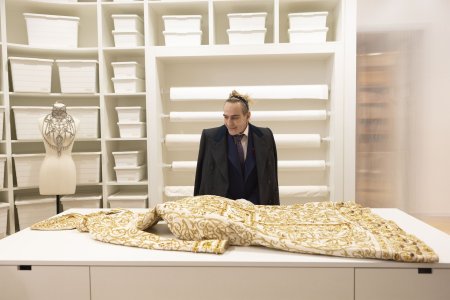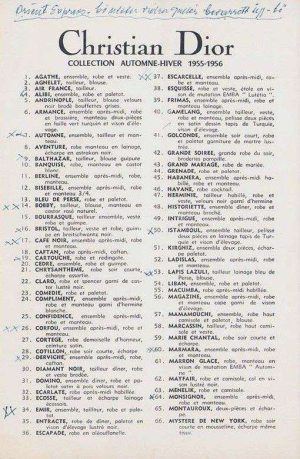[Galliano] doesn’t spare himself over the course of the 116-minute run time of the film—which features contributions from Naomi Campbell, Kate Moss, Bernard Arnault, Charlize Theron, Amanda Harlech, and Rabbi Barry Marcus—as he comes to terms with not just his recent past but his entire life.
Not about his upbringing in south London in the ’60s with his Spanish and Portuguese parents. Not about his student years, where he went full-throttle with the hedonistic club scene of ’80s London while still managing to—notoriously—graduate from Central Saint Martins art school with a 10-look collection, Les Incroyables, which has achieved mythic status. And certainly not the cycle of ascent, descent, and reascent with his own label, with Dior, and with Maison Margiela while facing addiction issues, departures from reality, and the racist and anti-semitic outbursts in a Paris bar which brought him and his world crashing down in 2011. “It was a disgusting thing, a foul thing, that I did,” Galliano says. “It was just horrific.”
On the phone from London, Macdonald—who previously directed the Academy Award-winning One Day in September, about the murder in 1972 of 11 Israeli Olympic athletes—speaks to why he wanted to make a documentary about Galliano. “There are two reasons,” he said. First, “John is regarded as one of the great designers of the last hundred years—everyone tells me this guy’s a genius. What does that actually mean in the world of fashion? What does it mean to be one of the greats?’
The other, he goes on to say, was around those antisemitic incidents and the subsequent firing of Galliano from Dior and the ensuing court case in Paris. “We’re living in a time in which—and John’s is really the origin of this for me—well-known people, celebrities, are getting caught by some socially unacceptable behavior and canceled in one way or another,” Macdonald said. “I was interested in the question of What happens to you afterwards? Is there a mechanism for forgiveness for that in society?”
Much of the power of Macdonald’s film lies in the way that it refuses to neatly lead us to a place of forgiveness—it tacitly acknowledges that the path to that place isn’t one everyone will want to take but is, rather, full of conflicting signposts and complicated diversions. To reduce it to black or white is too simplistic. That Macdonald can do all of this lies in no small part to a subject who, the director acknowledges, was prepared to speak his truth but understood that not everyone would hear him. (The interviews with the designer were conducted over six days, for four or five hours per day, and with no minder or PR present.)
“John knows he will never be forgiven by everybody,” Macdonald said. “He wants to be understood—to have the opportunity to explain as far as he can what happened. And he wants his case to serve as a warning. But he was also concerned not to make his story too depressing. At the end, he says his story isn’t actually depressing, because he has come out of everything with a renewed life and a renewed sense of vigor and creativity.”





